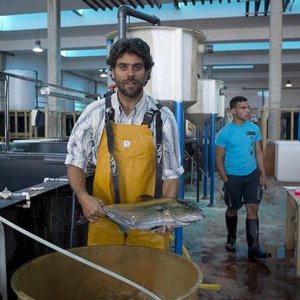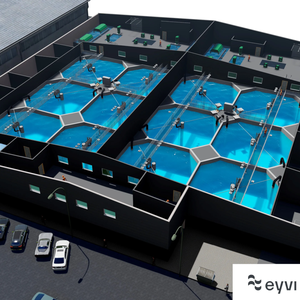The University of Minnesota Sea Grant (MNSG) program will begin a project to develop producer-scale methods for raising yellow perch fish from egg to market size using a recirculating aquaculture system (RAS).
“Many Minnesota fish farmers are looking for a species that has a much higher market value than tilapia. Yellow perch might fill that niche,” said Amy Schrank, MNSG fisheries and aquaculture extension educator and project lead. “Consistent availability of juvenile yellow perch has limited yellow perch aquaculture in Minnesota and the Great Lakes region and these limitations became more severe during the COVID-19 pandemic.”
The two types of indoor fish-rearing systems the project will compare are a flow-through and a recirculating aquaculture system or RAS. The two test systems will be located on the University of Minnesota's St. Paul campus. “Moving production of yellow perch from outdoor pond rearing to indoor RAS could increase overall production, increase growth rates, and expand the season when fresh yellow perch fillets would be available to consumers,” said Schrank. “We hope this project will also help increase the availability of biosecure fingerlings that fish farmers need.”
Once the project is complete, the project team plans to develop and distribute a guide and outreach materials for producers on how to raise yellow perch and describes best practices and cost estimates for production in RAS.
MNSG’s yellow perch project is funded by a $134,879 grant from the National Sea Grant Office and is one of 13 nationwide projects designed to address ongoing and long-term impacts associated with the COVID-19 pandemic on seafood resources, including aquaculture and the connection between aquaculture and wild-caught fisheries.













